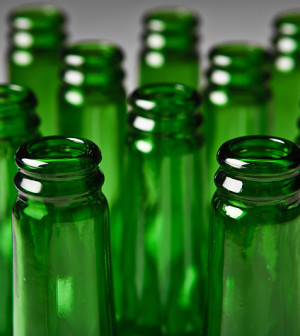- Skip Storing This Everyday Product in the Fridge Door
- Green Tea + B3 Pairing May Boost Brain Health
- Navigating Your Midlife Crisis: Embracing New Possibilities
- City Raccoons Showing Signs of Domestication
- Mapping the Exposome: Science Broadens Focus to Environmental Disease Triggers
- One Week Less on Social Media Linked to Better Mental Health
- Your Brain Changes in Stages as You Age, Study Finds
- Some Suicide Victims Show No Typical Warning Signs, Study Finds
- ByHeart Formula Faces Lawsuits After Babies Sickened With Botulism
- Switch to Vegan Diet Could Cut Your Greenhouse Gas Emissions in Half
Gays, Lesbians Face Certain Health Challenges, U.S. Report Says


Health behaviors and challenges often vary depending on a person’s sexual orientation, a new U.S. report finds.
But, those changes do not seem to follow a set pattern — some are healthy, some aren’t. For example, the federal researchers found that gays and lesbians were more likely to smoke and binge drink compared to heterosexuals. And bisexuals and lesbians were less likely than straight people to have a regular place to get medical care.
Some of the differences were positive, though. Overall, gays, lesbians and bisexuals were more likely than their straight peers to participate in regular exercise. And gay men were less obese than heterosexual men, the findings showed. They were also more likely to get flu vaccines than straight men, according to the federal report.
“We saw some differences by sexual orientation, but there is no clear overall pattern,” said report lead author Brian Ward, a health statistician with the U.S. National Center for Health Statistics. “You can’t say gay, lesbians and bisexuals have poorer health overall,” he added.
The survey findings are based on responses from nearly 35,000 adults who were interviewed in-person at their homes in 2013 as part of the National Health Interview Survey. This was the first time the survey included questions about sexual orientation.
Certain health problems were more common among gays and lesbians. More than one-third of lesbians were obese compared to 28 percent of straight women, and more than 40 percent of bisexual women were obese. Lesbian and bisexual women were also more likely to not have received medical care in the last year because of cost, the investigators found.
In terms of tobacco use, gay men, lesbians and bisexuals of both genders were more likely to smoke cigarettes than people who said they were heterosexual. They were also more likely to report recently consuming five or more alcoholic beverages in one day.
Other studies have shown that gay people are more likely to smoke and drink more alcohol than straight people, said Susan Cochran, a professor of epidemiology at the University of California, Los Angeles, who studies sexual orientation and health. “We know that these differences exist,” she said, but the new survey is important because it allows officials to track these kinds of health differences over time.
“Now we can measure whether anything has been done about these things over time,” Cochran added.
Not all of the findings offer signs of potential trouble for homosexuals. Gay men, lesbian women and bisexuals of both sexes seem to be getting more exercise than their straight counterparts, with gay men appearing to be the fittest. Both gay men and lesbians were more likely to have a private health insurance plan than their straight peers. Gay men were also more likely than straight men to have insurance, the survey found.
The survey results also included details about the percentages of participants who identified themselves as heterosexual, homosexual or bisexual.
All participants answered questions in person at their homes, potentially throwing off the results if any participants were reluctant to honestly discuss their sexuality with a stranger. Still, report lead author Ward said the results were in line with those from other national health surveys.
Of all those who answered the survey questions, 96.6 percent said they were heterosexual, 1.6 percent said they were gay or lesbian, and 0.7 percent said they were bisexual.
Answers varied by age, with seniors more likely to identify themselves as straight and people under 45 among those most likely to identify as bisexual.
Specifically, adults under age 65 were much more likely (about 2 percent) to say that they were gay or lesbian than older people (less than 1 percent). Women were more likely to identify as bisexual (almost 1 percent) than men (0.4 percent), the researchers noted.
Bisexuality was more common among those under 45 (1.1 percent) than 45 and older (0.4 percent of those 45 to 64, and 0.2 percent of those 65 and older). Another 1.1 percent of the participants provided other answers — “something else” or “I don’t know the answer” — or declined to answer the question.
UCLA’s Cochran said the numbers generally reflect the findings of similar surveys. But she cautioned that sexual orientation is a complex mix of desire and behavior that’s complicated by a variety of labels. Some people, for example, have had sexual experiences with their own gender but say they’re straight.
The report was released July 15 by the U.S. Centers for Disease Control and Prevention’s National Center for Health Statistics.
More information
For more about sexual orientation, visit the American Psychiatric Association.
Source: HealthDay
Copyright © 2025 HealthDay. All rights reserved.










